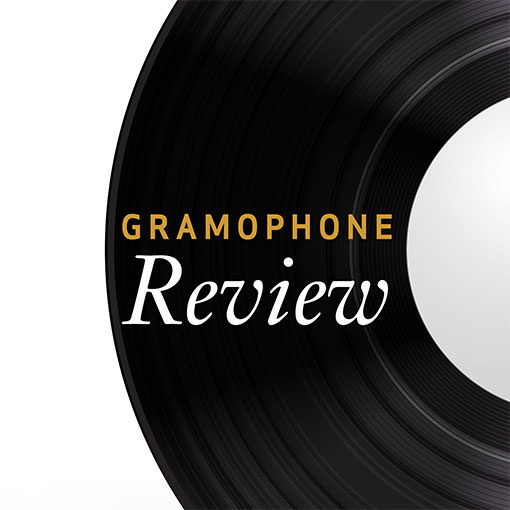Delalande: Sinfonies
View record and artist detailsRecord and Artist Details
Composer or Director: Michel-Richard de Lalande
Label: Erato
Magazine Review Date: 11/1986
Media Format: Vinyl
Media Runtime: 0
Mastering:
DDD
Catalogue Number: NUM75174

Tracks:
| Composition | Artist Credit |
|---|---|
| Sinfonies pour les soupers du Roi, Movement: Concert de trompettes |
Michel-Richard de Lalande, Composer
(Jean-François) Paillard Chamber Orchestra Jean-François Paillard, Conductor Michel-Richard de Lalande, Composer |
| Sinfonies pour les soupers du Roi, Movement: Suite V |
Michel-Richard de Lalande, Composer
(Jean-François) Paillard Chamber Orchestra Jean-François Paillard, Conductor Michel-Richard de Lalande, Composer |
| Sinfonies pour les soupers du Roi, Movement: Suite VII |
Michel-Richard de Lalande, Composer
(Jean-François) Paillard Chamber Orchestra Jean-François Paillard, Conductor Michel-Richard de Lalande, Composer |
Author: Nicholas Anderson
Lalande or Delalande (that was how he signed his name), depending on which reference books you read, wrote a large number of instrumental and orchestral pieces for use at various courtly functions at Versailles and elsewhere, too, no doubt. Many of them were designated for performance at the King's suppers whilst other were intended for the chapel or for outdoor occasions. All the pieces in the present anthology are contained in a manuscript dating from 1727 and copied under the supervision of the court music librarian Philidor l'Aine.
The Concert de trompettes pour les festes sur le canal de Versailles was, of course, outdoor music; its scoring consists of trumpets, drums, oboes and strings. This is occasional music par excellence evoking our accepted image of the French court of Louis XIV. The three Caprices, on the other hand, are wholly different both in character and in form. Caprice No. 1 in D major lacks precise scoring details but is played here with trumpets and drums in addition to the intended strings and doubtless, woodwind. Caprice No. 3, also in D major, is scored for flutes, oboes, bassoon and strings, and contains an appealing set of variations; but it is Caprice No. 2 in G minor ''which the king often requested'' that, to my mind, steals the show. Scored for oboes, bassoon, strings and continuo its five sections, alternating slow and fast, melt into each other with varying affects. A centrally placed G major section with concertante bassoon, is of haunting beauty and a reminder that expressive writing of such poignancy was not the sole property of Charpentier.
The music on this record is identical with Paillard's earlier Erato LP (STU70185—not submitted for review) of about 20 years ago. He has made some concessions to progress in his recent version such as a token appearance of appoggiaturas, uneven rhythms and some tauter phrases; but the style is lamentably old-fashioned in most other respects and readers in possession of the earlier LP should not feel under any obligation to discard it in favour of the new one. Paillard, nevertheless, draws some fine playing from his orchestra and there is some splendid trumpet playing from Guy Touvron whose technique I have often admired in other contexts. Stylish performances of this music, however, are sadly lacking at present.
So, in spite of reservations concerning general approach, a qualified welcome since this inventive music has been out of the catalogue for far too long. The recorded sound is only fair; the G minor Caprice is recorded at a rather low level. I await the CD which may improve matters.'
The Concert de trompettes pour les festes sur le canal de Versailles was, of course, outdoor music; its scoring consists of trumpets, drums, oboes and strings. This is occasional music par excellence evoking our accepted image of the French court of Louis XIV. The three Caprices, on the other hand, are wholly different both in character and in form. Caprice No. 1 in D major lacks precise scoring details but is played here with trumpets and drums in addition to the intended strings and doubtless, woodwind. Caprice No. 3, also in D major, is scored for flutes, oboes, bassoon and strings, and contains an appealing set of variations; but it is Caprice No. 2 in G minor ''which the king often requested'' that, to my mind, steals the show. Scored for oboes, bassoon, strings and continuo its five sections, alternating slow and fast, melt into each other with varying affects. A centrally placed G major section with concertante bassoon, is of haunting beauty and a reminder that expressive writing of such poignancy was not the sole property of Charpentier.
The music on this record is identical with Paillard's earlier Erato LP (STU70185—not submitted for review) of about 20 years ago. He has made some concessions to progress in his recent version such as a token appearance of appoggiaturas, uneven rhythms and some tauter phrases; but the style is lamentably old-fashioned in most other respects and readers in possession of the earlier LP should not feel under any obligation to discard it in favour of the new one. Paillard, nevertheless, draws some fine playing from his orchestra and there is some splendid trumpet playing from Guy Touvron whose technique I have often admired in other contexts. Stylish performances of this music, however, are sadly lacking at present.
So, in spite of reservations concerning general approach, a qualified welcome since this inventive music has been out of the catalogue for far too long. The recorded sound is only fair; the G minor Caprice is recorded at a rather low level. I await the CD which may improve matters.'
Discover the world's largest classical music catalogue with Presto Music.

Gramophone Digital Club
- Digital Edition
- Digital Archive
- Reviews Database
- Full website access
From £8.75 / month
Subscribe
Gramophone Full Club
- Print Edition
- Digital Edition
- Digital Archive
- Reviews Database
- Full website access
From £11.00 / month
Subscribe
If you are a library, university or other organisation that would be interested in an institutional subscription to Gramophone please click here for further information.





